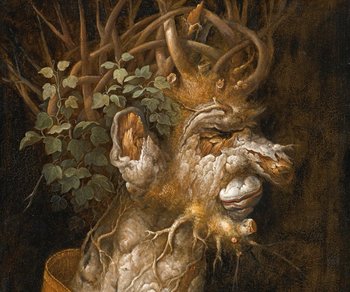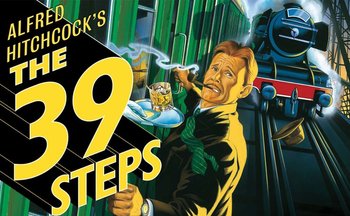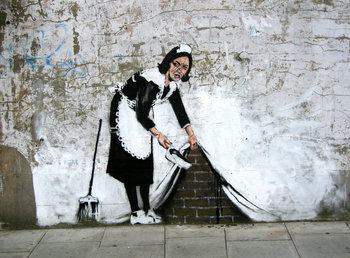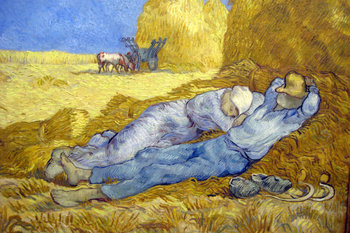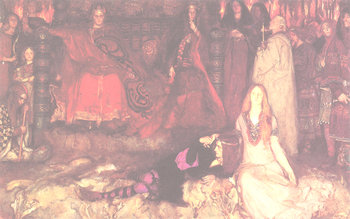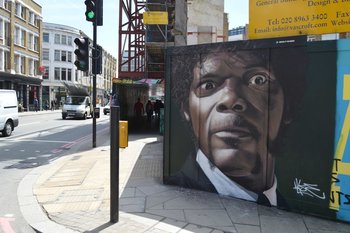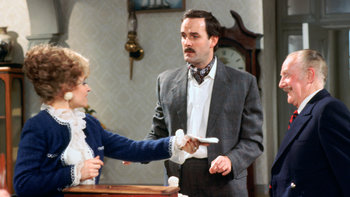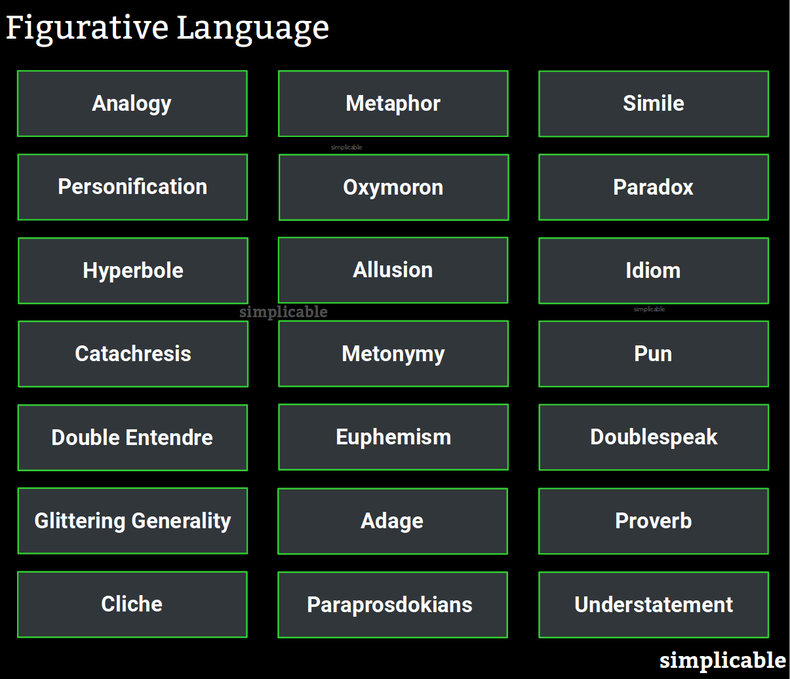
Analogy
Analogy is a broad term for any attempt to transfer meaning from one topic to another. For example, "the eyes are the windows to the soul."Metaphor
A type of analogy that directly suggests two things are the same such as "time is a thief."Simile
A simile is similar to a metaphor but uses language to weaken the comparison such as "like" or "resembles." This has less impact and can produce cowardly writing. For example, "time is like a thief."Personification
Personification is the assignment of human qualities to non-human entities such as "the camera loves her."Oxymoron
The use of contradictory terms in close proximity to each other such as "same difference."Paradox
A statement that is self-contradictory or illogical that may be used to provoke thought. For example, "this sentence has never been read."Hyperbole
An exaggeration that is designed such that no reasonable person would take it literally. For example, "this is the best toast that was ever toasted."Allusion
A brief reference to a well known person, place, event or concept. This requires knowledge of the reference to understand. For example, "she flew over the cuckoo's nest" is a reference to the 1962 novel One Flew Over the Cuckoo's Nest.Idiom
An idiom is any figurative language that is widely known by the native speakers of the language such that it can be considered a feature of the language. For example, "piece of cake" can be used as a substitute for "easy" in English.Catachresis
Using a word in an unconventional way. For example, "I need to mow by beard."Metonymy
Referring to something by the name of a closely related association. For example, referring to business people as "suits."Pun
A joke that exploits different possible meanings for a word or phrase. For example, "You were right, so I left."Double Entendre
A phrase designed to have a double meaning. This is commonly used as humor, a passive aggressive insult or as a means for talking about something risque indirectly. It is also common for double entendres to be unintentional.
Euphemism
Using a pleasant substitution for profanity or an unpleasant topic. For example, the use of "passed away" in place of "died."Doublespeak
Language that is used to conceal the truth. For example, referring to bombing as "servicing the target."Glittering Generality
A glittering generality is positive emotional language devoid of content such as "for the common good!"Adage
A short statement that most people would accept as true such as "life is short."Proverb
A traditional saying that provides advice such as "honesty is the best policy."Cliche
Figurative language that has been overused such that people find it irritating. For example, "think outside the box."Paraprosdokians
A two part phrase where the later part causes you to reinterpret the first part. Used for humor or dramatic effect. Winston Churchill was particularly known for his witty paraprosdokians such as "a modest man, who has much to be modest about."Understatement
An expression of less strength than expected. Often used for emphasis, irony and humor. For example, in Monty Python's The Meaning of Life a character is asked how he feels after losing his leg to a tiger. The character calmly replies "stings a bit." The character also calmly assumes that a large mosquito is responsible for taking his leg and that his leg will grow back.| Overview: Figurative Language | ||
Type | ||
Definition | Language that isn't intended to be taken literally. | |
Related Concepts | ||








